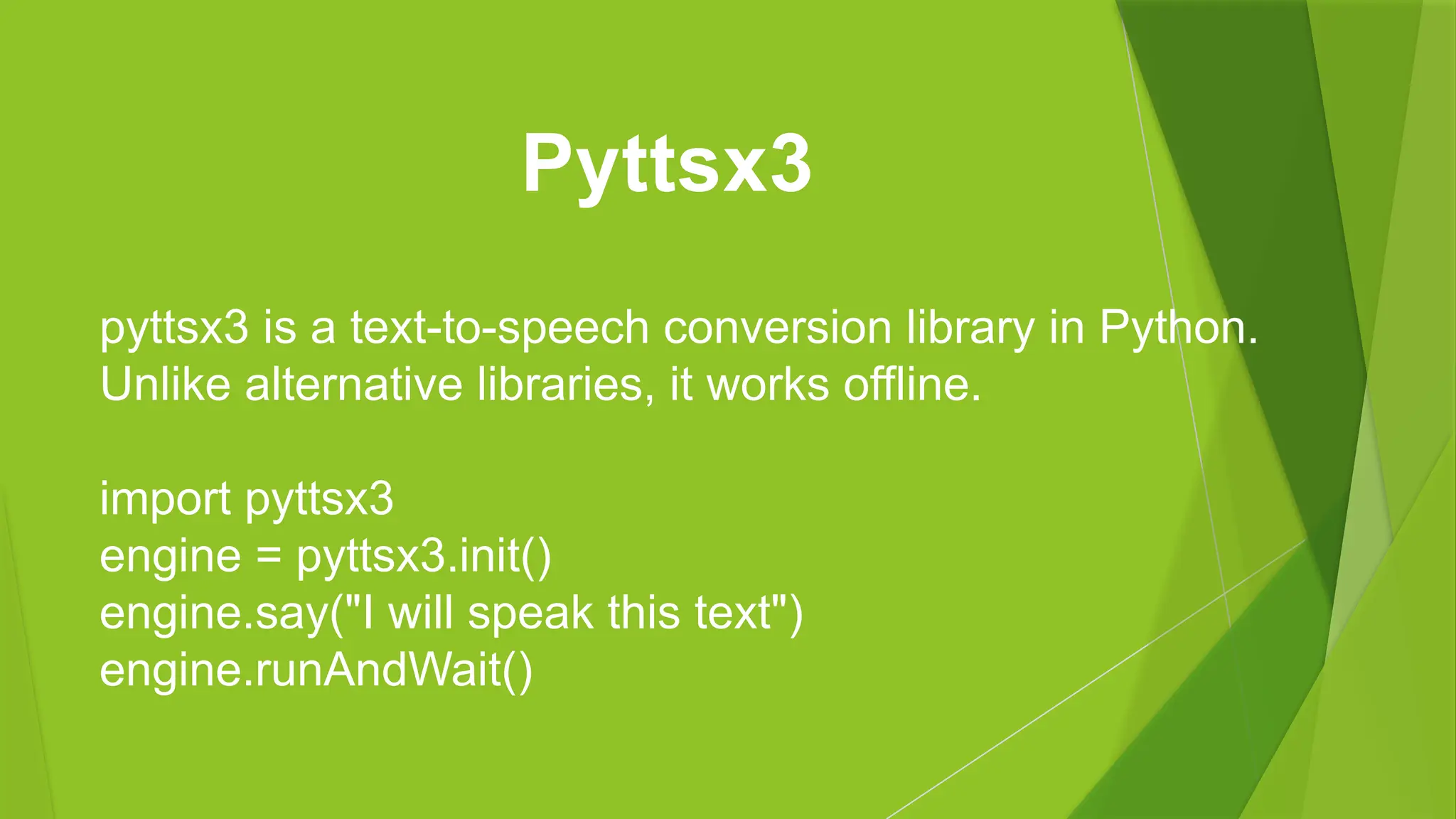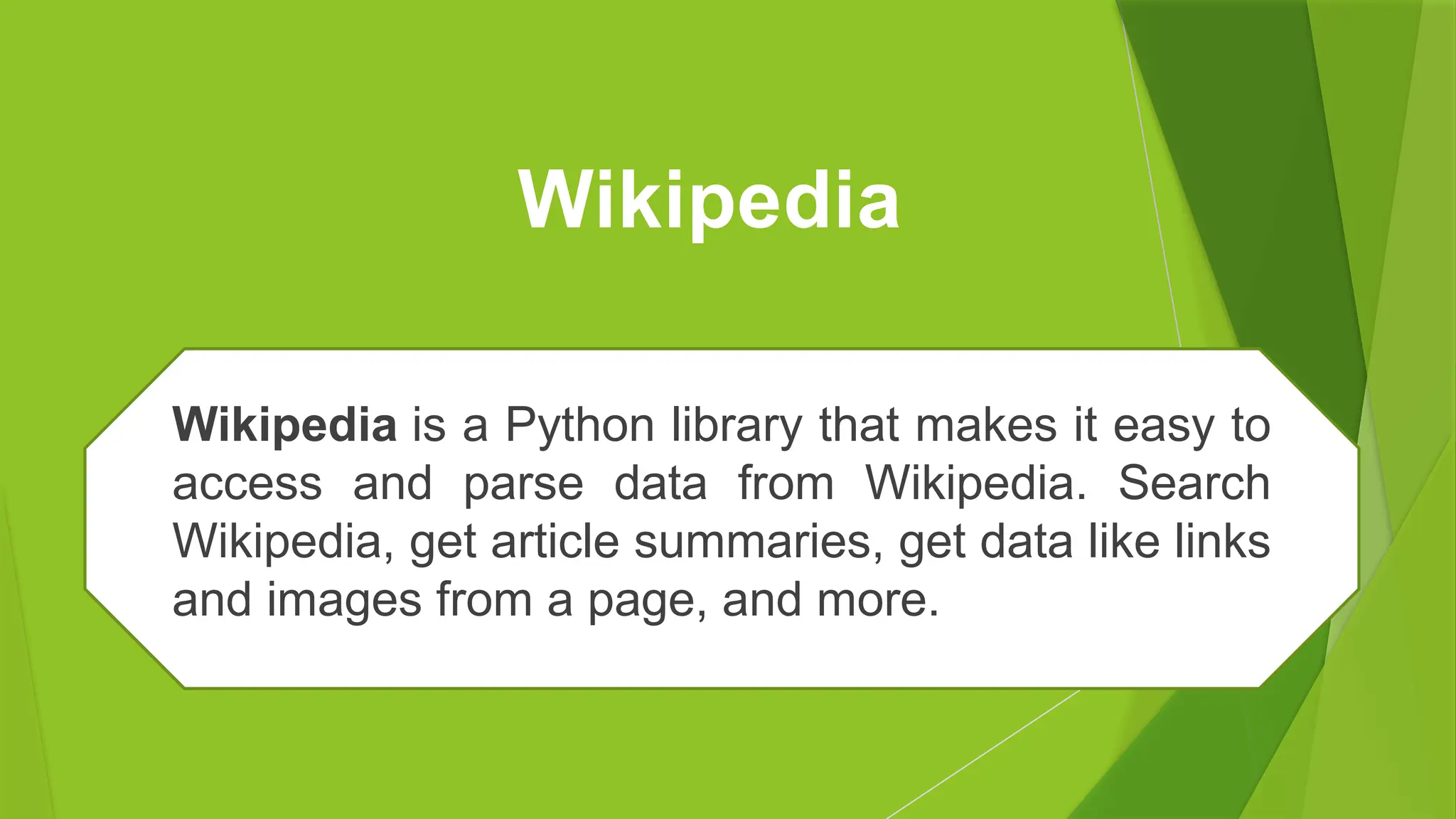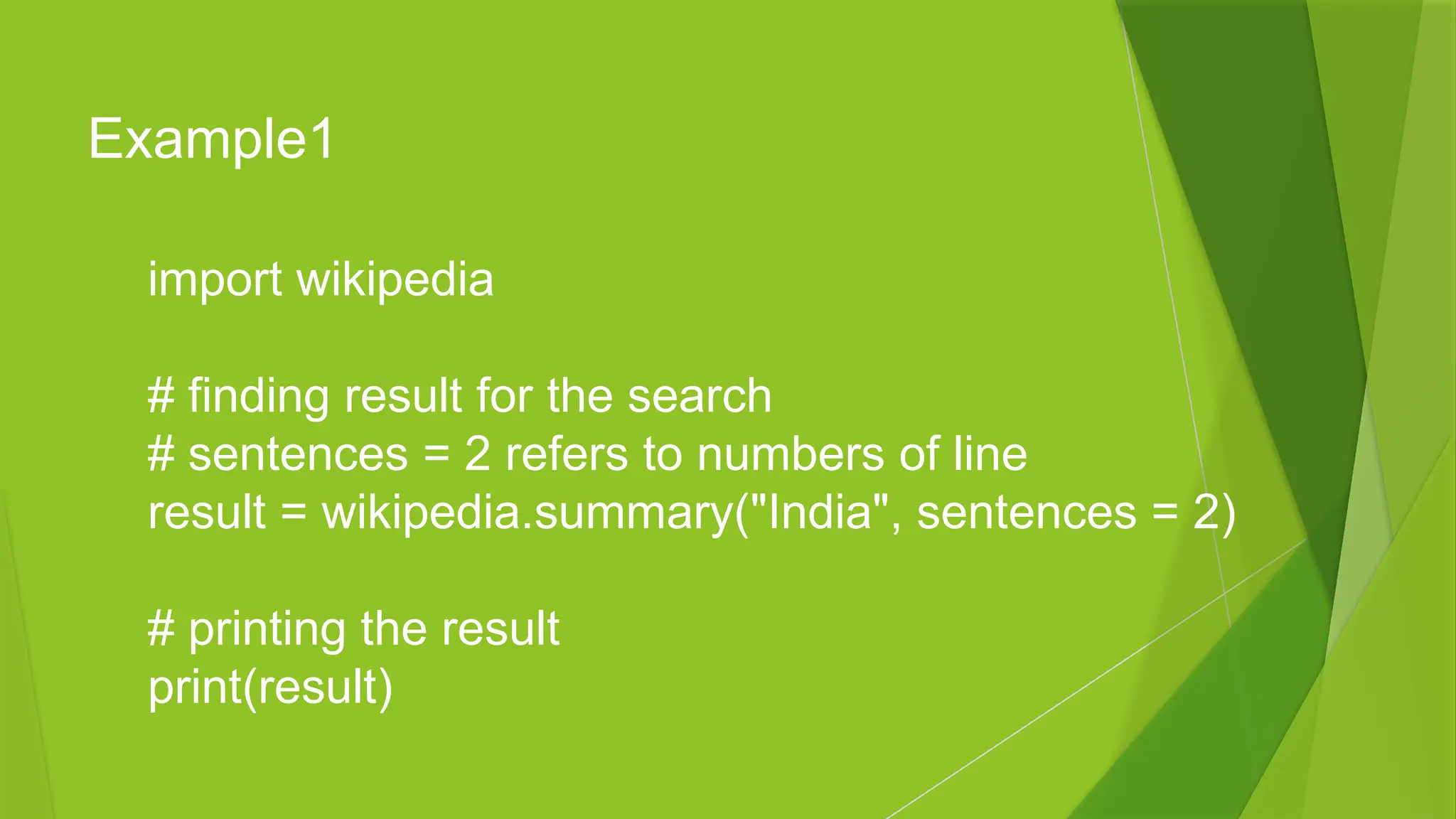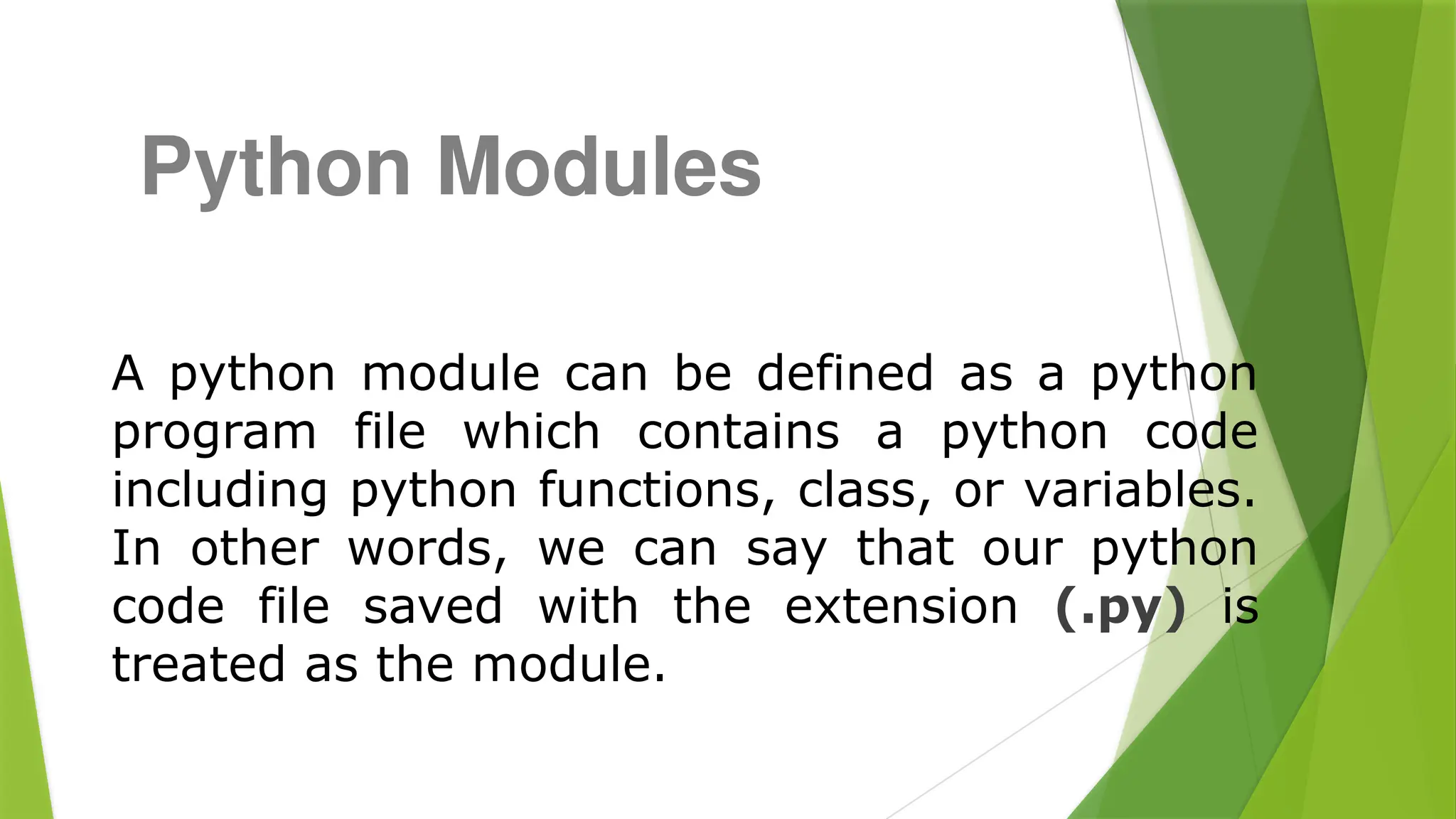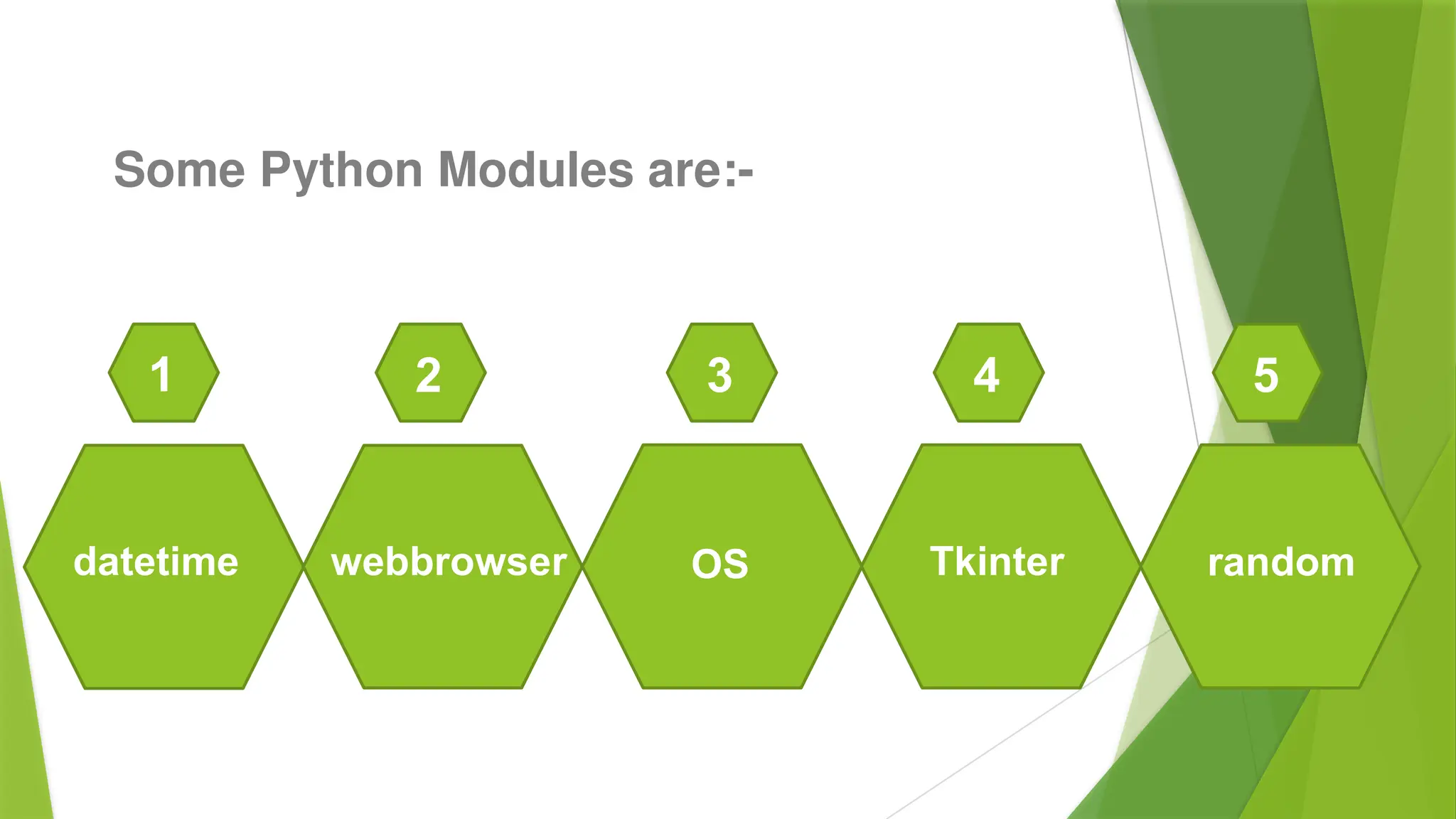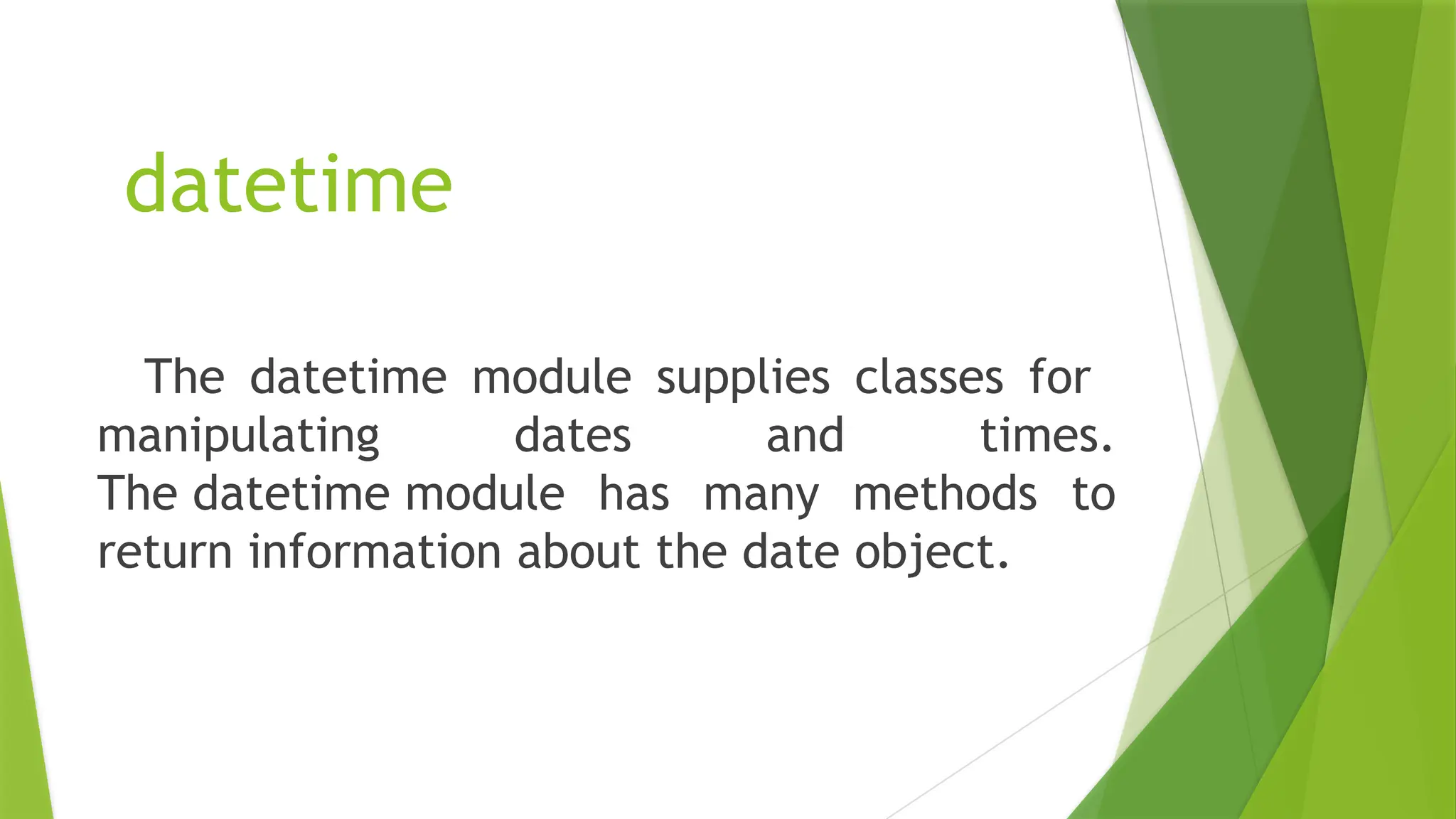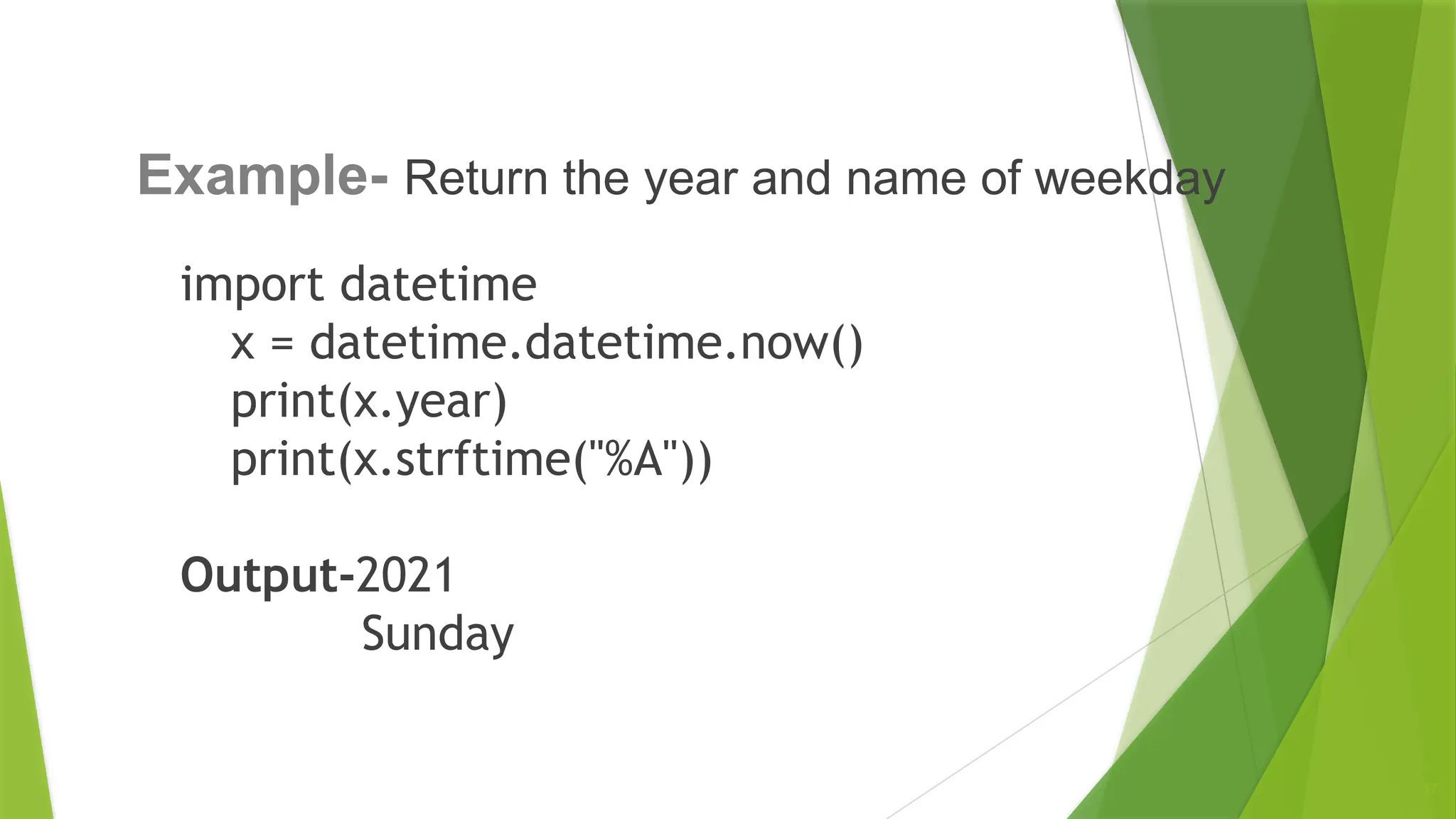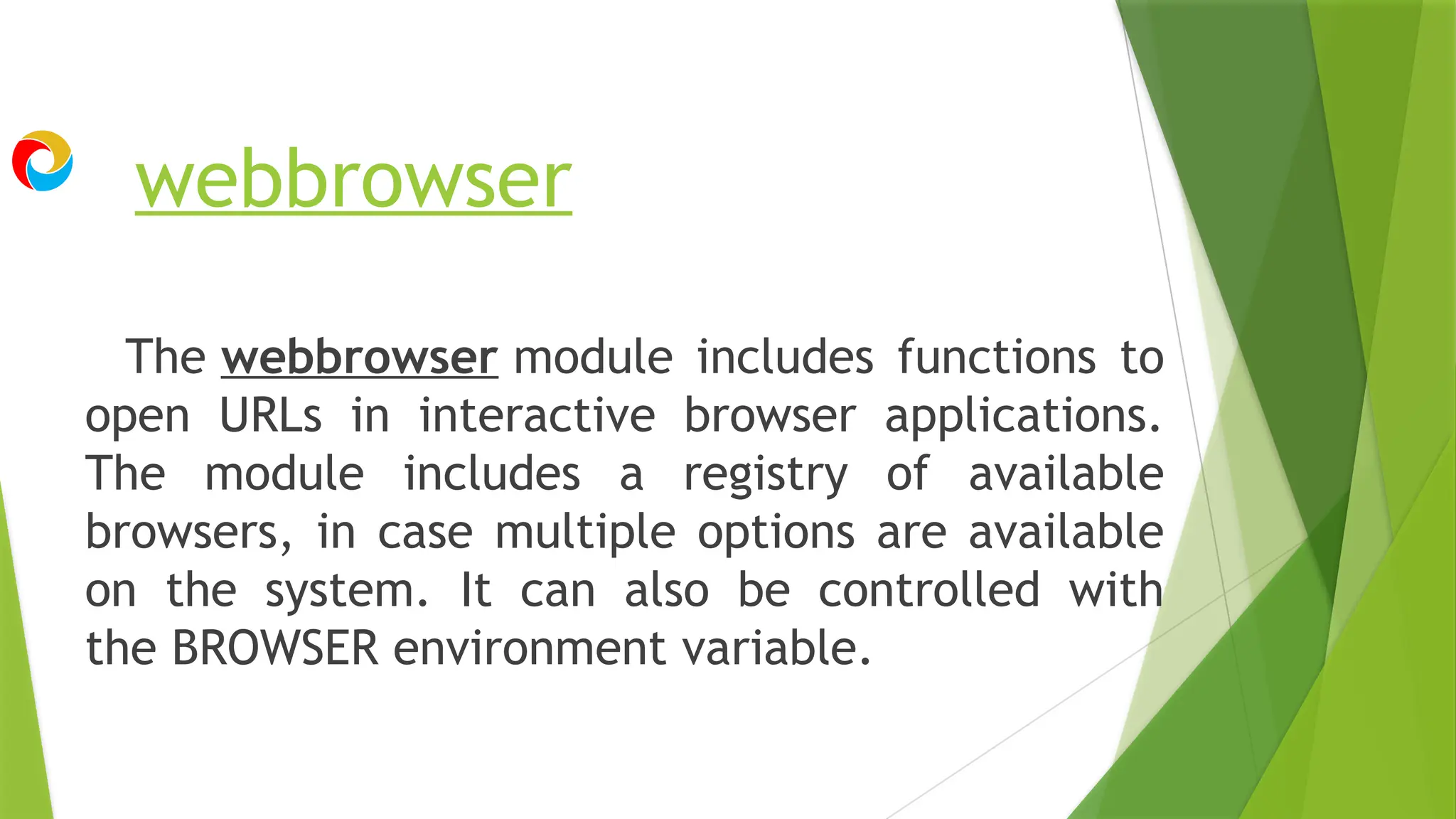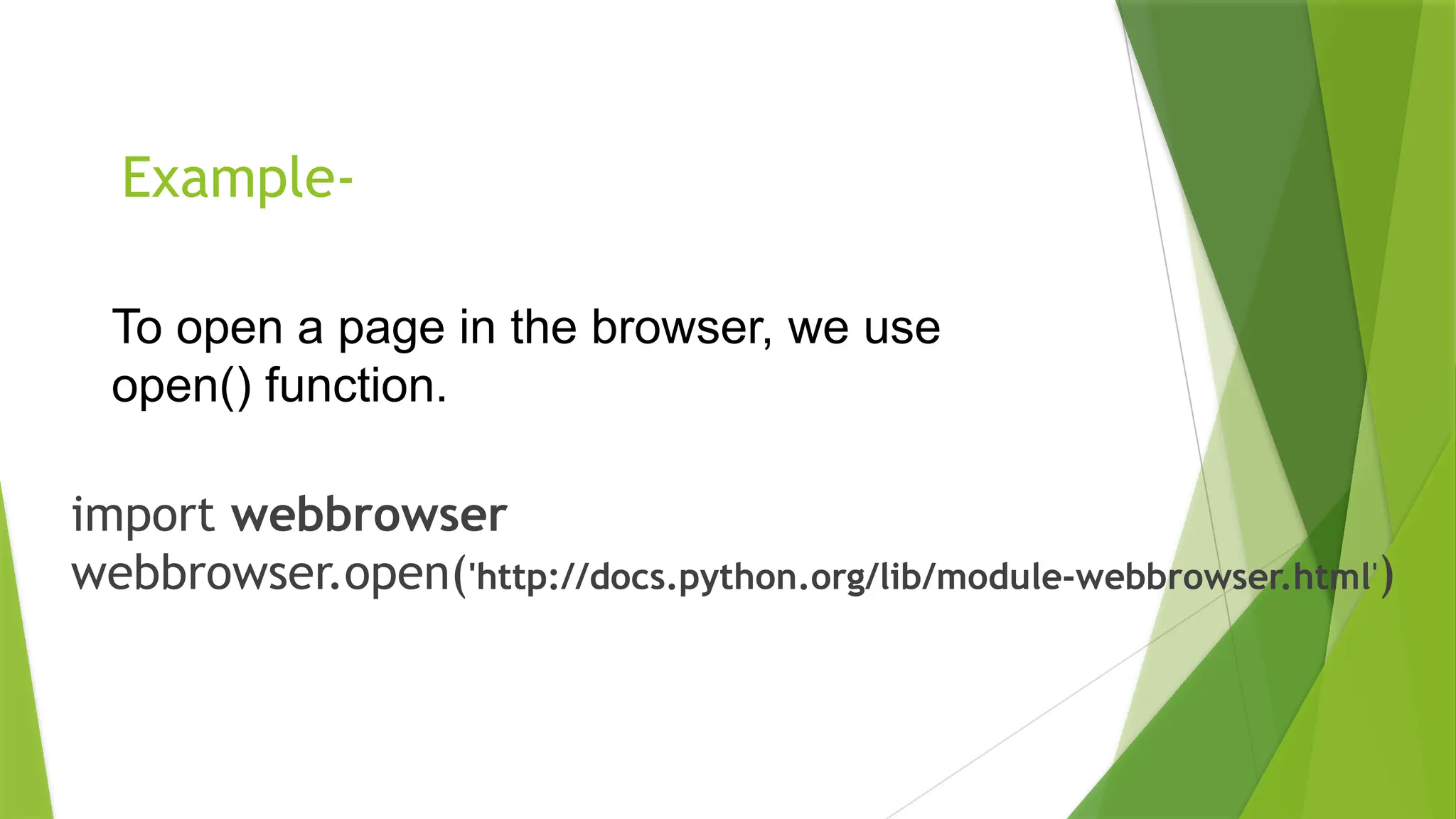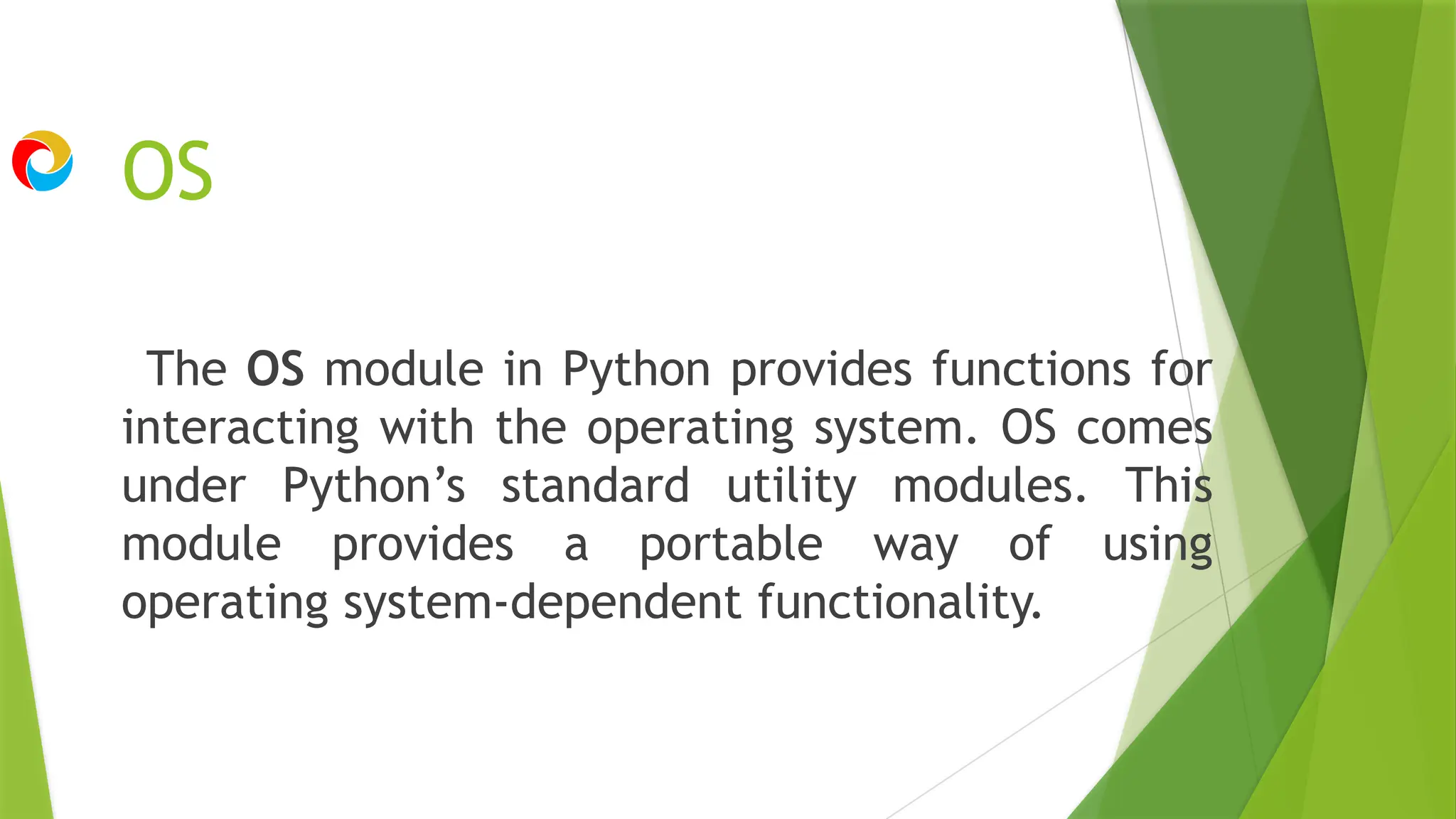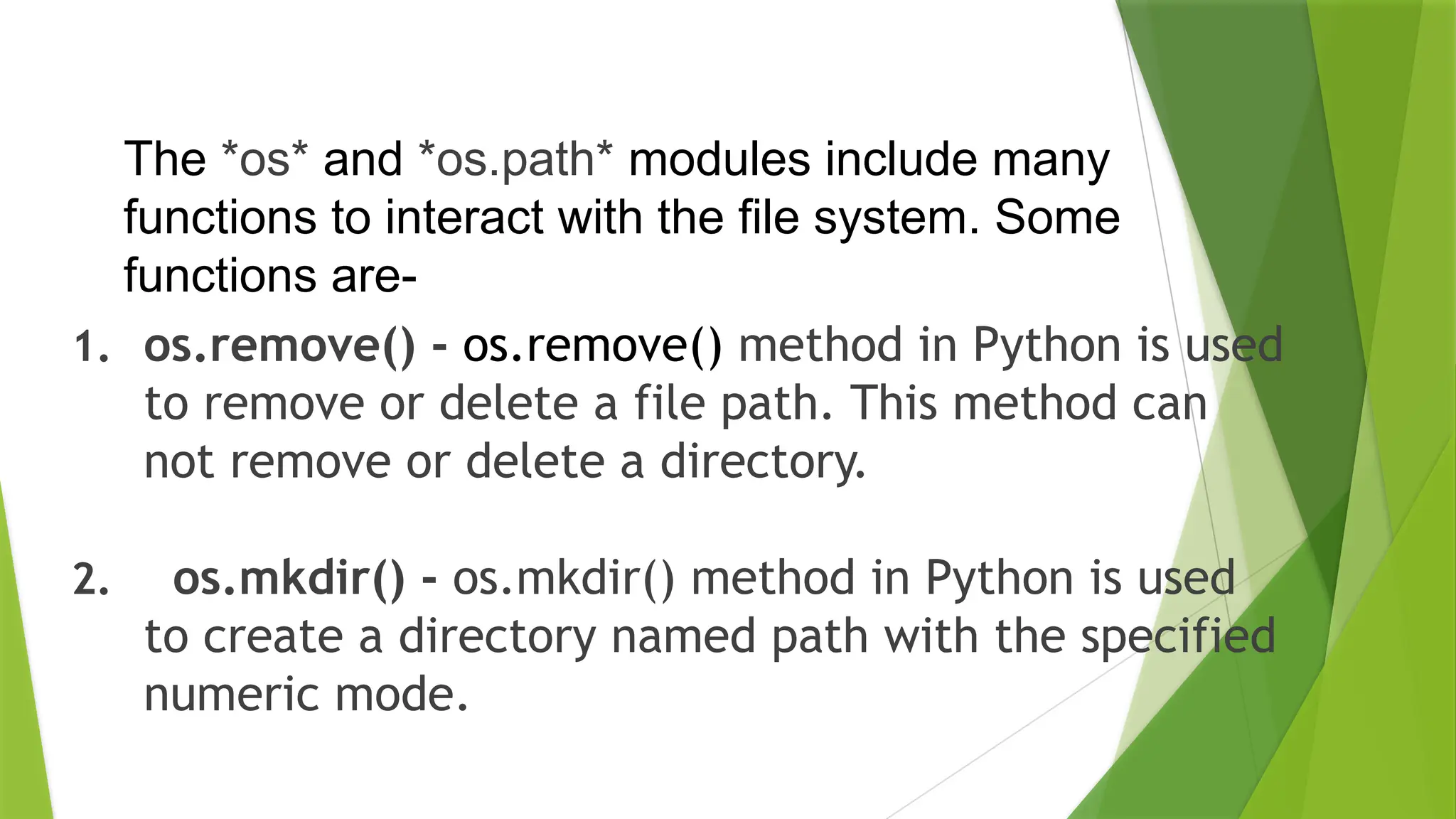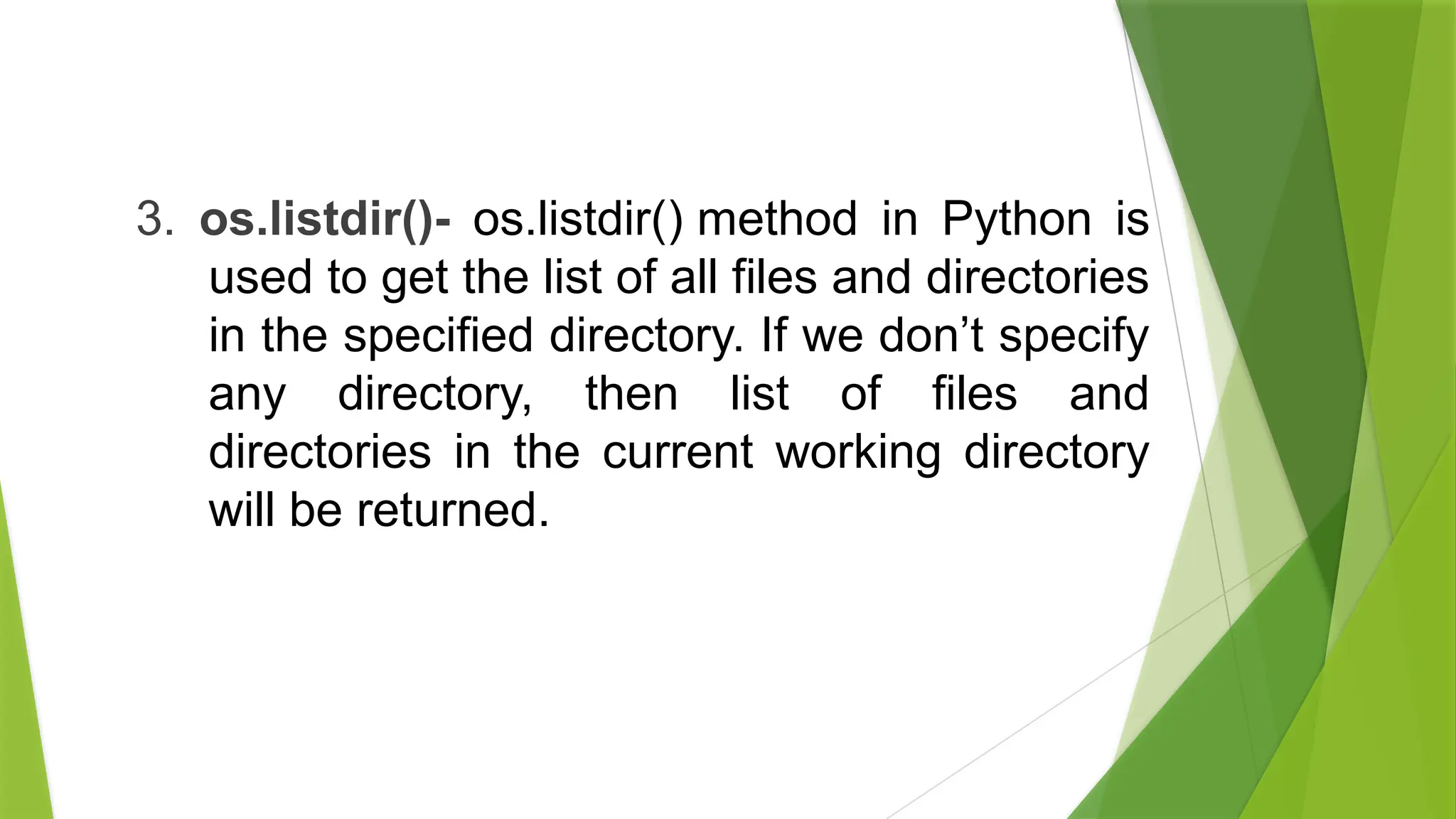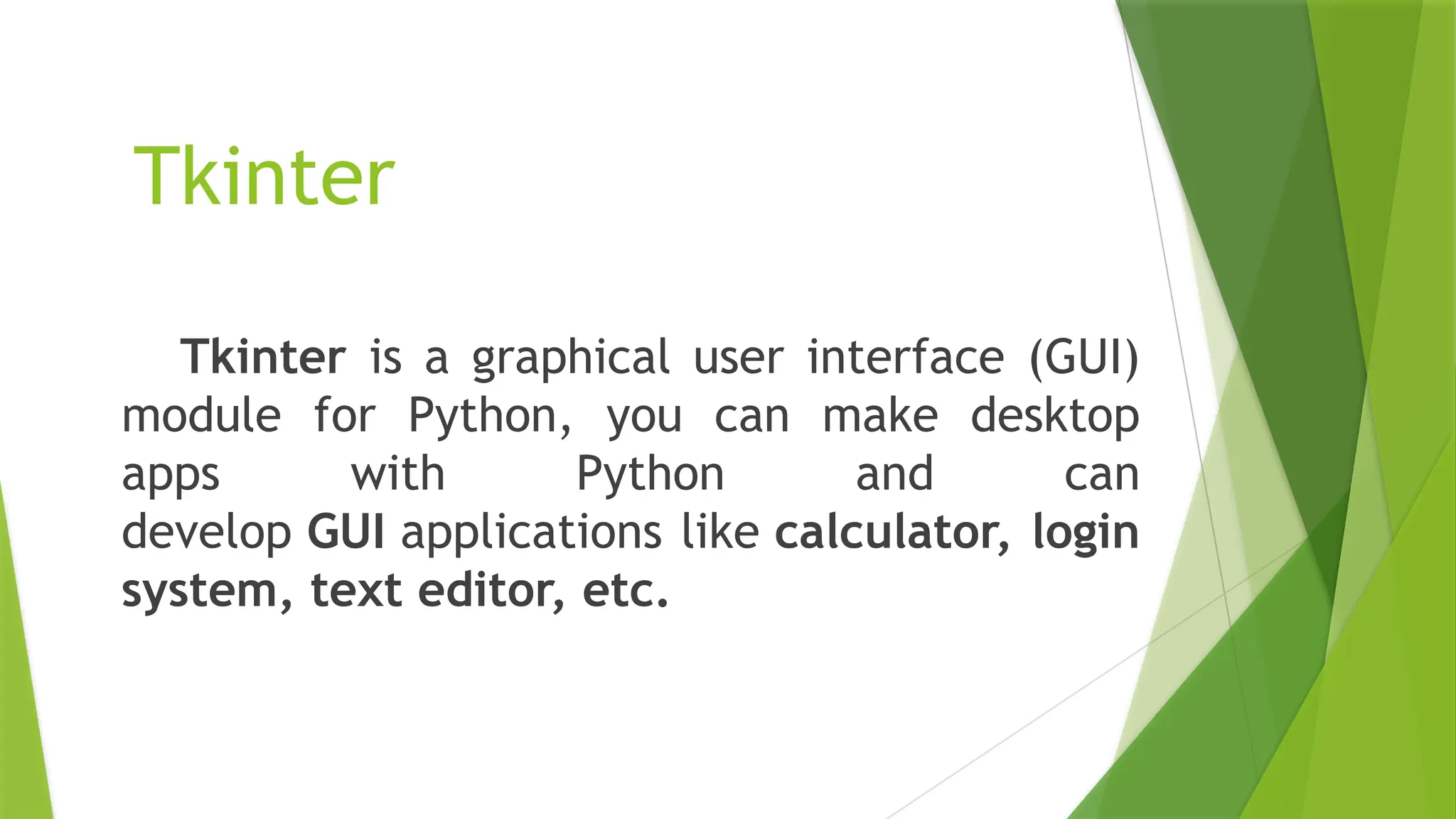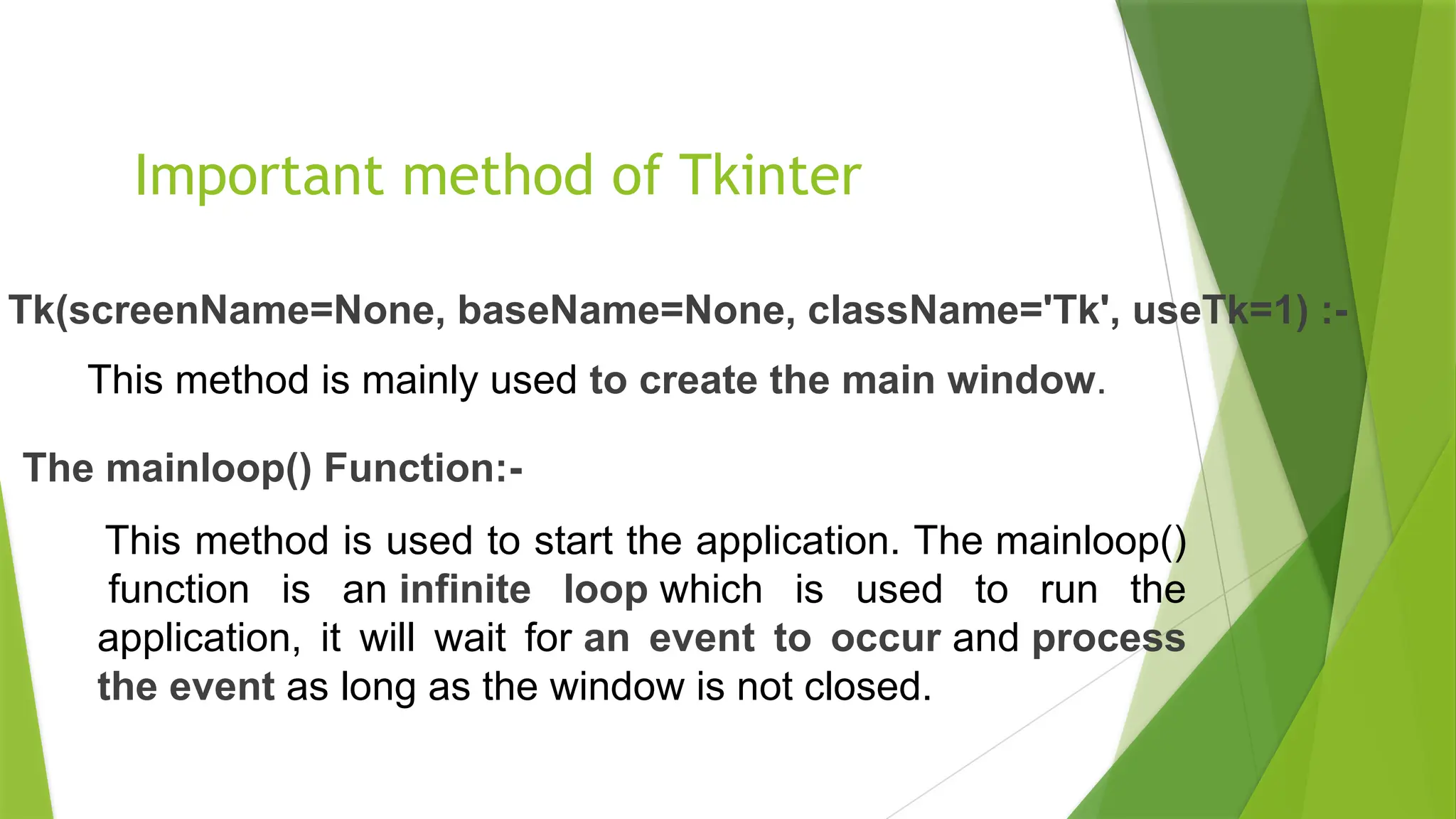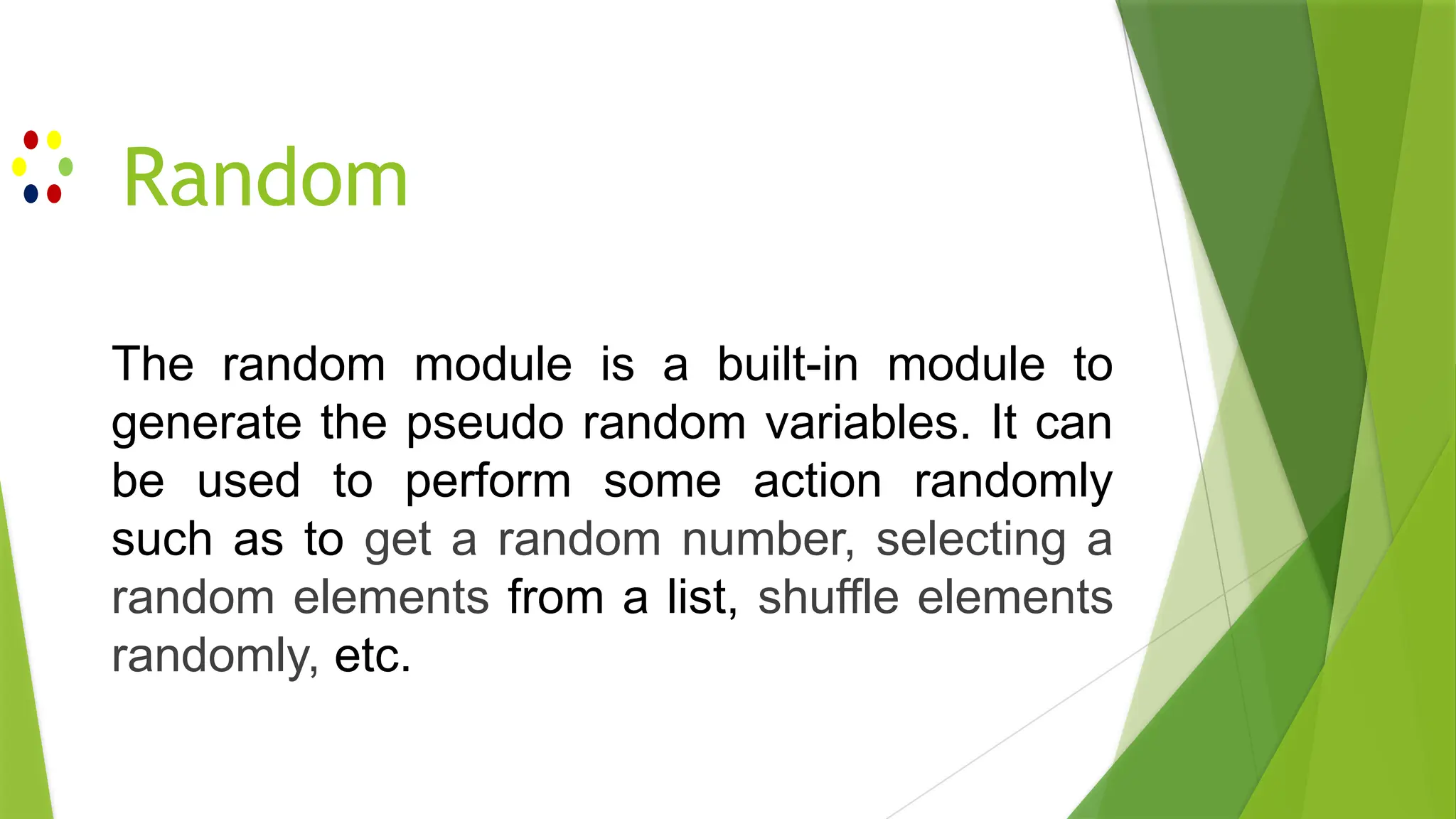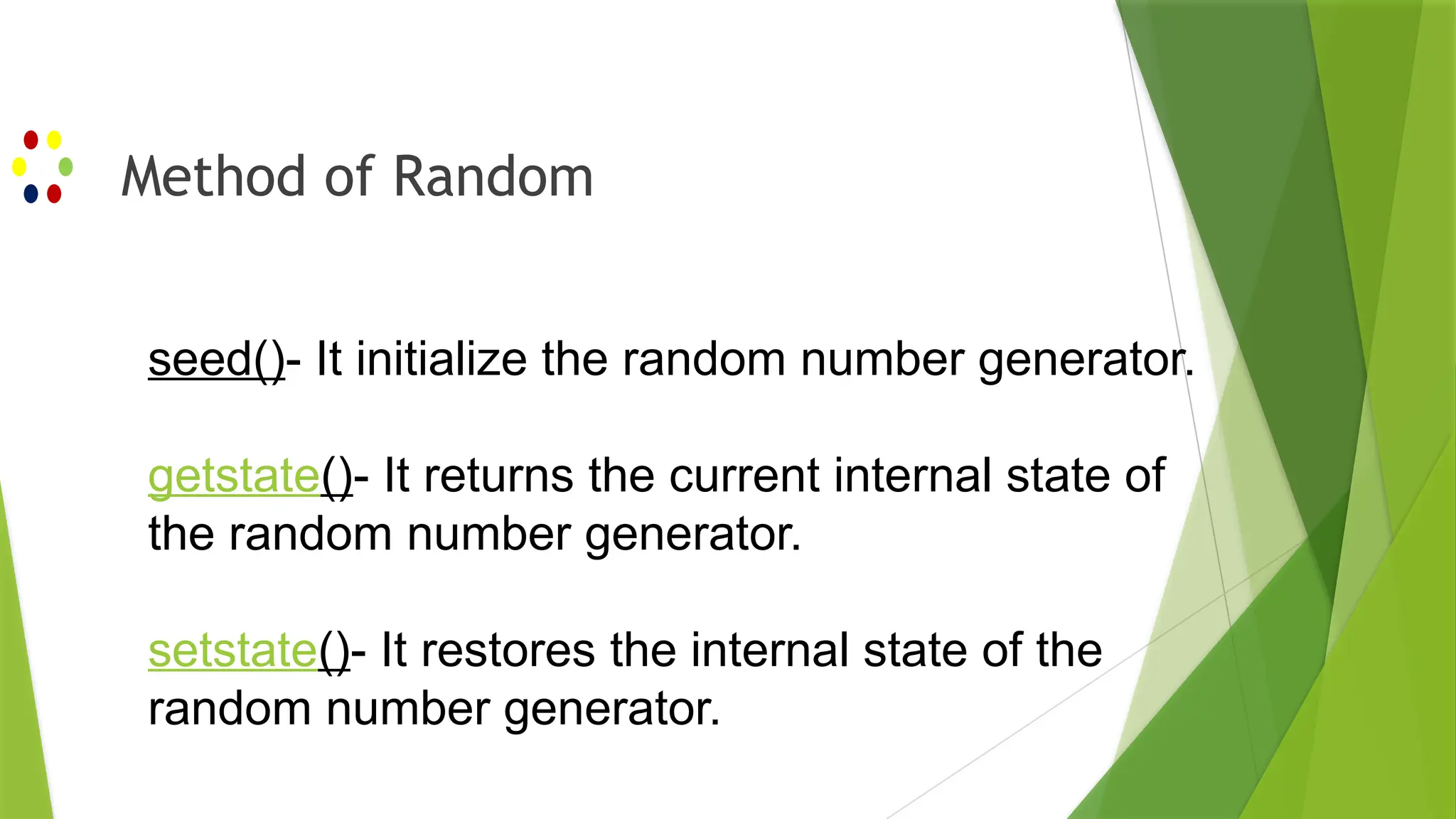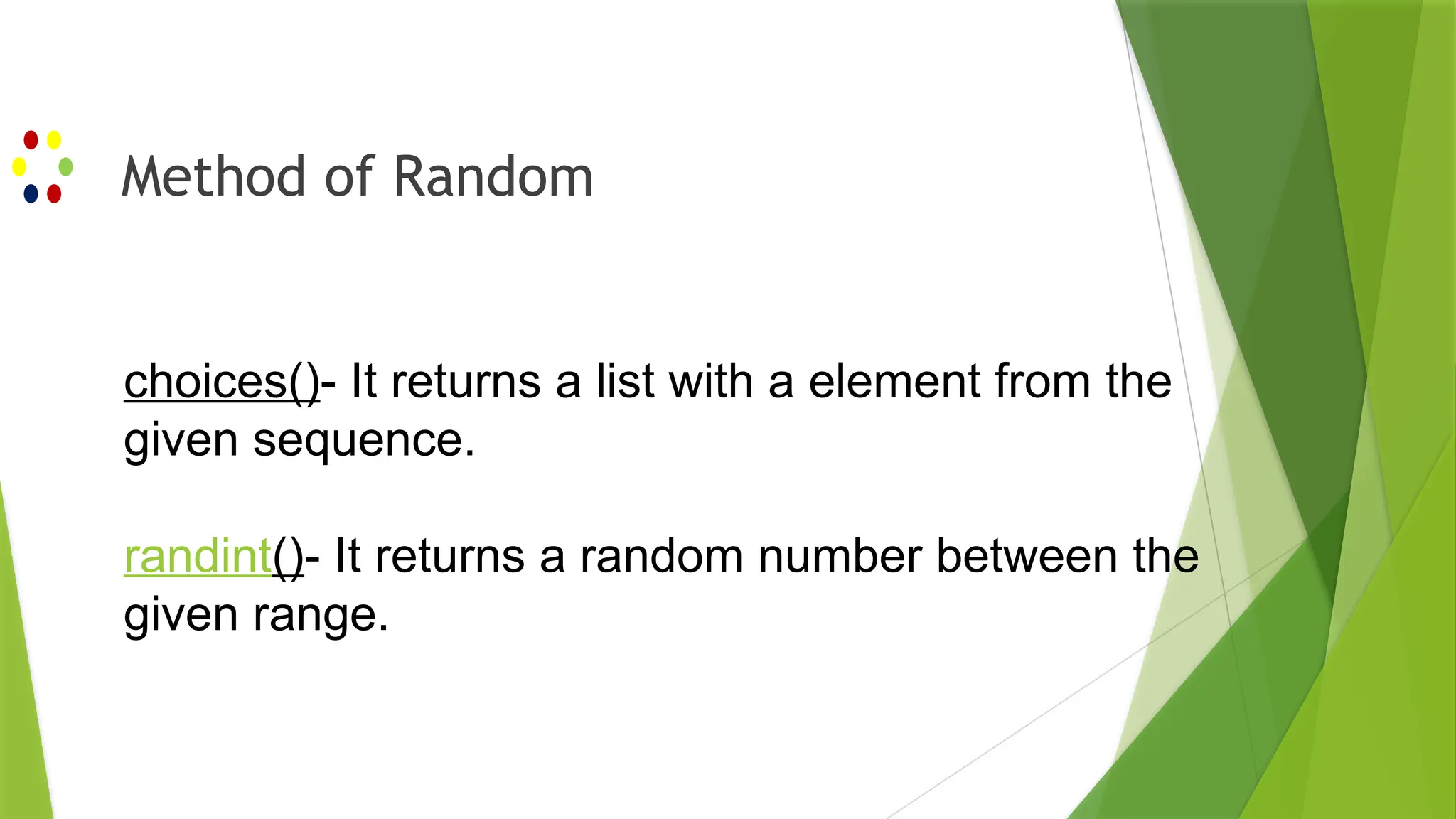The document provides an overview of various Python libraries and modules, detailing their functionalities and usage in programming. Key libraries such as NumPy for numerical operations, Pandas for data manipulation, and Pyttsx3 for text-to-speech are highlighted, along with common modules like os and datetime for operating system interactions and date management. It also discusses the graphical user interface capabilities of Tkinter and random number generation using the random module.
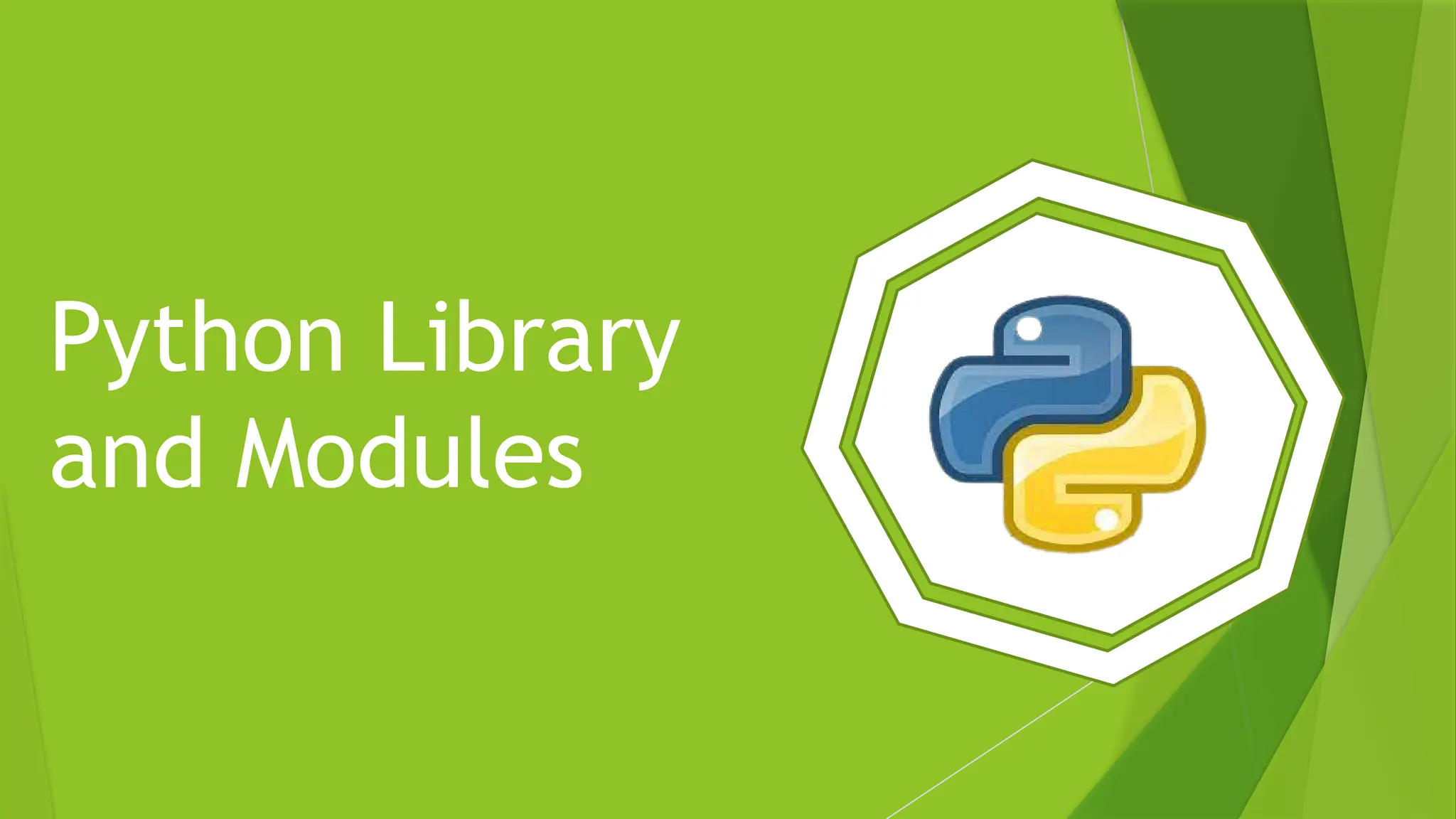

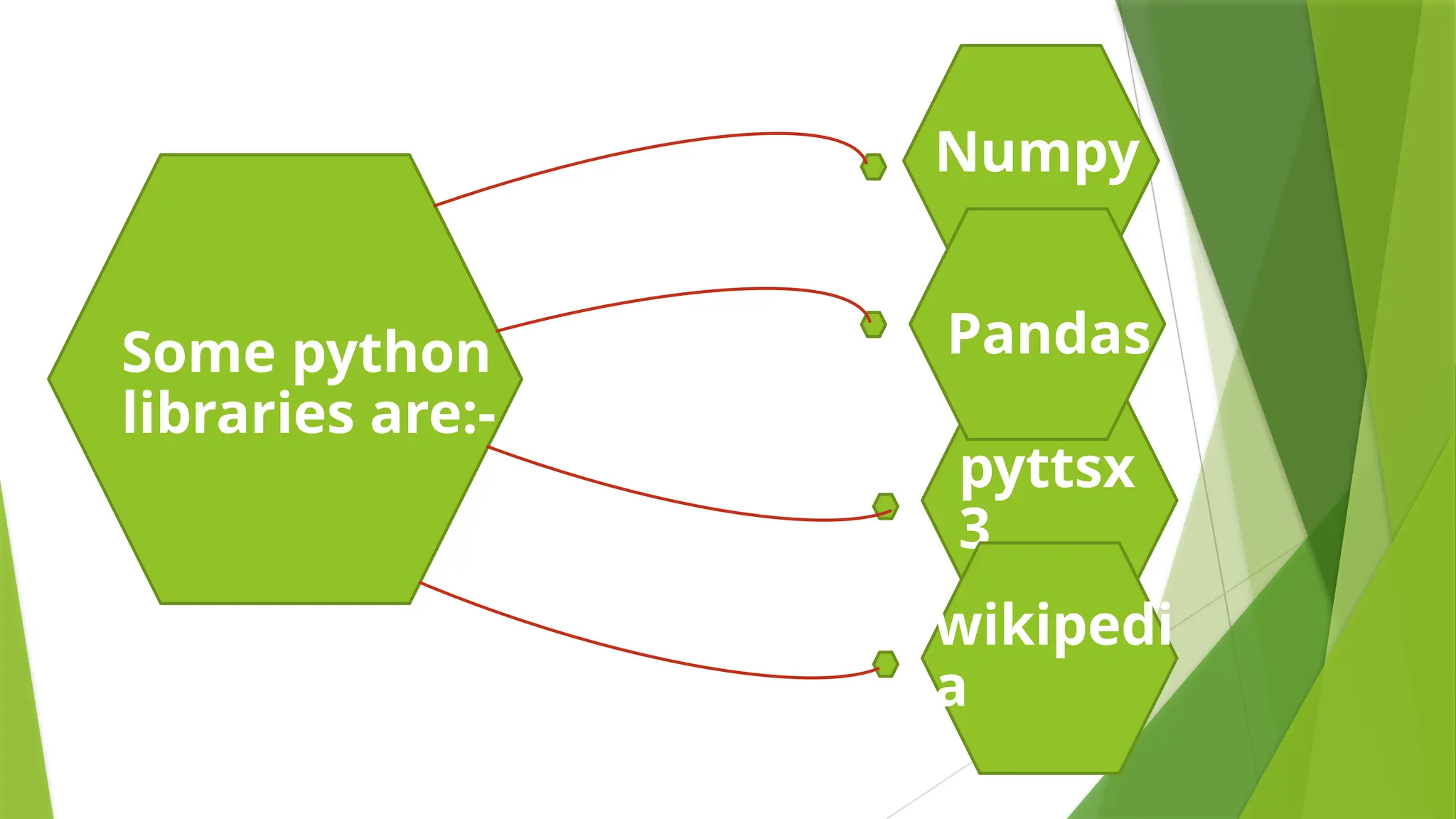
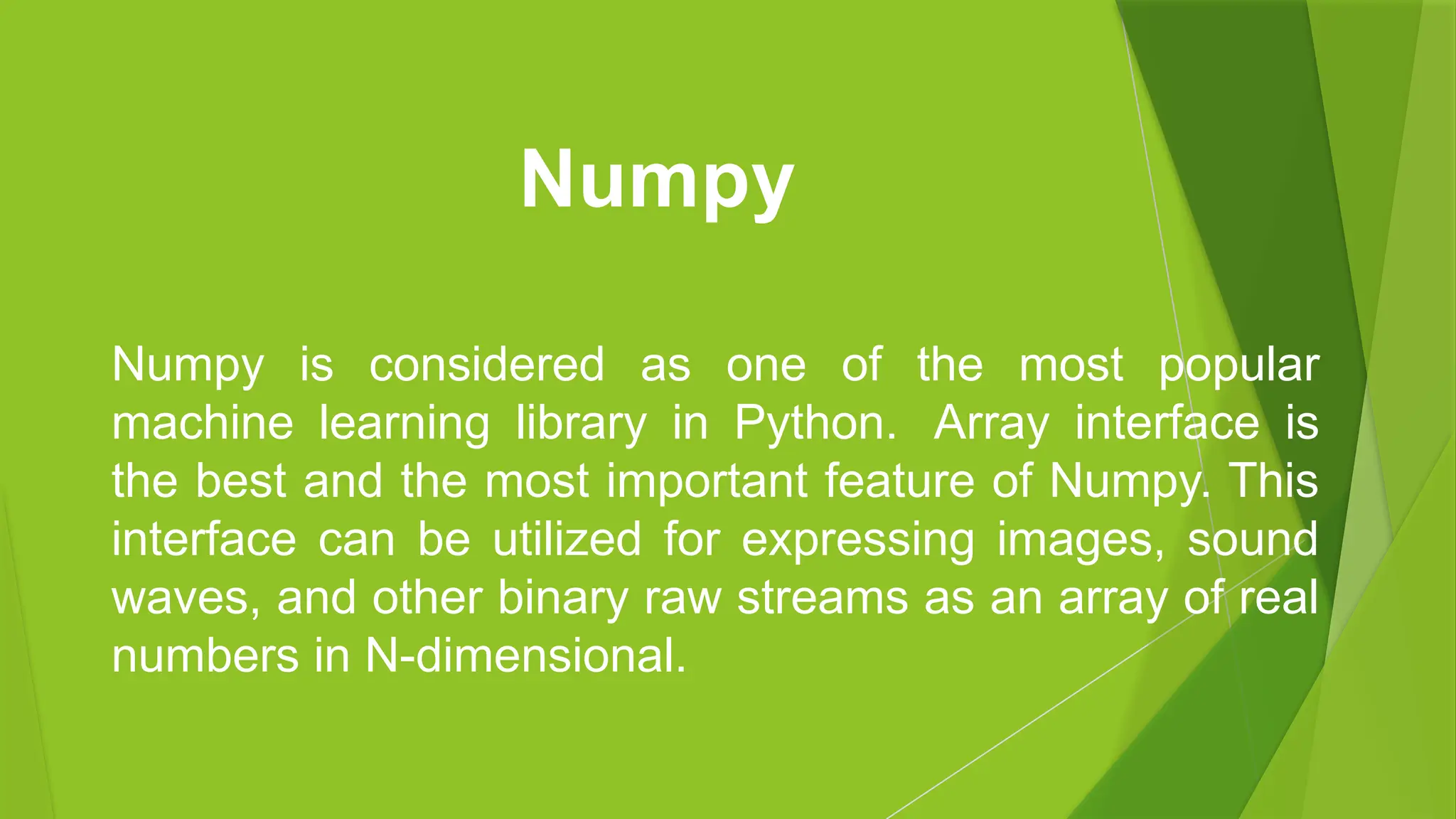
![import numpy as np
arr = np.array([1, 2, 3, 4, 5])
print(arr)
print(type(arr))
Output- [1 2 3 4 5]
<class 'numpy.ndarray'>
Example 1-](https://image.slidesharecdn.com/libraries-241121143655-67f3ee8b/75/libraries-in-python-using-different-pptx-5-2048.jpg)
![import numpy as np
arr = np.array([[1, 2, 3], [4, 5, 6]])
print(arr)
Output- [[1 2 3]
[4 5 6]]
Example 2-](https://image.slidesharecdn.com/libraries-241121143655-67f3ee8b/75/libraries-in-python-using-different-pptx-6-2048.jpg)

![import pandas as pd
data = {'Name':[' Janny ', 'Amit',’Suji‘]
'Age':[28,34,29,42]}
df = pd.DataFrame(data)
print df
Its output is as follows −
Age Name
0 28 Janny
1 34 Amit
2 29 Suji
Example1](https://image.slidesharecdn.com/libraries-241121143655-67f3ee8b/75/libraries-in-python-using-different-pptx-8-2048.jpg)
